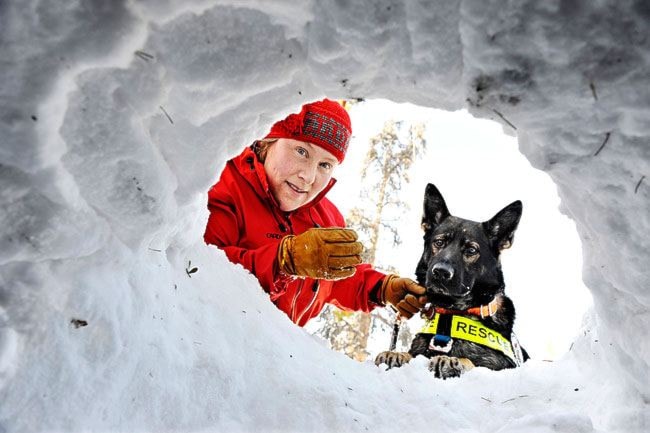One of this year’s 10 largest landslides worldwide has occurred at Mount Steele, in the St. Elias Mountains of Kluane National Park and Reserve.
On Oct. 11, over 40 million tonnes of ice and rock came crashing down the 5,067-metre mountain, Canada’s fifth-highest peak.
“It’s probably like all the cars in Canada,” said Goran Ekstrom, a seismologist at Columbia University. “The equivalent mass coming down the side of a mountain.”
The volume of debris is estimated at 24 million cubic metres. The slide plummeted over two kilometres down the mountain and spilled out over nearly four kilometres of the Steele Glacier. At its peak, the avalanche was moving at about 220 kilometres per hour.
Ekstrom discovered the landslide with his colleague, Colin Stark, thanks to a project that has them tracking seismic signals all over the world. They’ve discovered that large landslides, volcanoes, glacier calving events and even meteorite strikes all transmit seismic signals that look different from earthquake vibrations.
When the vibrations from the Mount Steele avalanche registered, Ekstrom was fairly sure he was looking at a landslide. Then Stark confirmed it by finding satellite images that showed the pile of rubble at the base of the slide.
But Ekstrom and Stark can do more than just locate landslides. Using the strength of the seismic signal, they can actually weigh them. Without their calculations, it would have been almost impossible to estimate the size of this avalanche.
“It’s very difficult to estimate how thick the deposits are without going into the field and doing very careful mapping,” Ekstrom explained. And in such a remote location, getting to the avalanche would not be easy.
Still, Mount Steele has been the site of some fairly extensive landslide research in recent years. In 2007, two massive avalanches rocked the mountain within two days of each other.
The first slide was caused by a chunk of glacier detaching from the steep mountain slopes, explained Jeff Bond, head of surficial geology at the Yukon Geological Survey. That first slide left part of the rock face exposed, which caused the second slide, made up mostly of rock and rubble.
That second slide was twice as large as this month’s avalanche, weighing in at nearly 100 million tonnes.
“The 2007 (slide) was quite potentially the largest ever in Western Canada, in recorded history,” Bond said.
After that, a number of researchers from the Yukon Geological Survey flew to Mount Steele to investigate. They concluded that there is likely a fault zone in that area, which makes the rock weak and unstable.
“In those zones, the rocks can be quite crumbled or quite deformed or ground up,” Bond explained.
But there is also a chance that climate change has a role to play in these massive slides.
“I would think that climate change... could potentially cause more glaciers to fail on these slopes, which could also lead to rock slides,” Bond said. He also noted that the timing of this year’s slide was unusual. The 2007 slides occurred in July, when temperatures are warmer and ice is more likely to melt and break. But this slide was in October, when everything should be frozen in the mountains.
Still, it’s hard to say exactly what caused this slide. Bond said the Geological Survey likely won’t be able to send anyone out to study this avalanche because it’s so late in the year. In fact, the debris may already be covered in snow.
And Ekstrom pointed out that it’s hard to know how the size and frequency of these slides are changing, because seismologists have only recently started to monitor them.
“We are realizing that many of these landslides have happened previously without anybody knowing about them,” he said. “We actually don’t know that much about the frequency of landslides in these remote areas.”
He hopes that continued seismological research will provide a better inventory of major avalanches around the world.
Bond said that even though Mount Steele is in a remote, uninhabited area, it’s important to monitor and understand these events.
“This type of slide, while it doesn’t impact people here in the Yukon in any major way, it’s significant in terms of other glaciated regions of the world where there are people living in mountainous environments.”
Contact Maura Forrest at
maura.forrest@yukon-news.com
